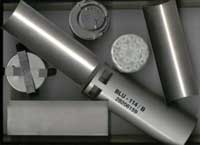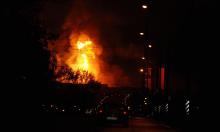Taiwan to use non-lethal, sabotage bomb to wipe out China's electrical system
Taiwan is developing a bomb designed to wipe out China's electrical system, according to the United Daily News. The newspaper claims that Taiwan - still dubbed a "renegade Province" by China - is working on a graphite bomb similar to one the U.S. reportedly used against Serbia in 1999.

If approved by parliament, the Chungshan Institute of Science and Technology - Taiwan's top arms research unit - would begin research and development of the weaponry at a cost of up to NT$500 million (US$15.34 million), beginning next year, according to the report.
Taiwan's defense ministry declined to comment on the claims.
Pravda.Ru has decided to interview John Clifford Jones, a well-known explosives expert and reader in the School of Engineering, University of Aberdeen, to find out more about graphite bomb.
“One has to understand that the term ‘graphite bomb’ is possibly a little misleading. The destructive factor in a graphite bomb is not heat produced in a chemical or nuclear process. A graphite bomb releases fine particles of graphite, a form of carbon, into the electricity supply system of the area at which it is directed. Graphite is a good electrical conductor and once in contact with transmission lines will cause shorting and cessation of supply. A graphite bomb is sometimes described as being ‘non-lethal’ and so is perhaps better classified as a sabotage device than as a weapon,” said Dr. Jones in the interview.
Pravda.Ru: Is it possible for Taiwan to create and to use such a bomb?
Clifford Jones: The graphite bomb was first used against Iraq in the 1990-91 Gulf War and again against Serbia about eight years later. The principles are understood and there are reports that Taiwan has allocated a sum of $US22 million to the necessary development work. So the indications are that the Taiwan graphite bomb has a good chance of becoming reality if that is the intention of the Taiwan government but much will depend on the quality of the development work.
Pravda.Ru: What consequences may follow if Taiwan succeeds in exploding such a bomb in China?
Clifford Jones: Graphite bomb is dispersing rather than exploding. Consequences of the operation of a graphite bomb depend on factors additional to the bomb itself including the range of the missiles which will carry it and the population of the target city. A further factor is the extent to which electrical plant at which the graphite is directed is protected by insulation.
The first use of the BLU-114/B submunition was during Operation Allied Force, when it was used to attack Serbian power grid transformer and switching yards. Dropped by the F-117, the munition was dispensed using the SUU-66/B Tactical Munitions Dispenser normally associated with the delivery of the terminally guided BLU-108/B submunitions carried on the CBU-97/CBU-105 Sensor Fuzed Weapon. The unguided used in these systems is typically delivered with a circular error probable of a few hundred feet. Other more precise weapon delivery systems such as the Joint Direct Attack Munition do not appear readily adaptable to existing submunition dispenser systems, though such an application would not constitute an overly challenging engineering problem.
The AGM-154A Joint Standoff Weapon [JSOW] is intended to provide a low cost, standoff air-to-surface glide weapon with a modular design which allows several different submunitions, unitary warheads, or non-lethal payloads to be carried. The JSOW is a launch and leave weapon that employs a tightly coupled Global Positioning System (GPS)/Inertial Navigation System (INS), and is capable of day/night and adverse weather operations. The JSOW will be employed on a variety or aircraft, including: F/A-18A/B, C/D, and E/F; AV-8B; F-14A/B and /D; F-16C/D; F-15E; F-117; B-1B; and B-52. JSOW initial introduction to the operational commands was on the Navy/Marine Corps F/A-18 in mid-1998.
Click here to read more about graphite bomb
Prepared by Alexander Timoshik
Pravda.Ru
Subscribe to Pravda.Ru Telegram channel, Facebook, RSS!





